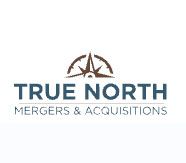The Importance of Technology in Post-Merger Integration

True North Mergers & Acquisitions
November 25, 2024

While technology isn't a silver bullet for post-merger success, it plays an important role in the post merger integration (PMI) process. Most companies heavily rely on technical solutions for smooth operations and key performance indicators (KPIs). Key performance indicators become crucial metrics that need to be monitored and managed during this essential phase of the business's life. From managing client rosters and tracking inventory to maintaining accurate accounts, successful merger integrations often hinge on functional technology.
A primary challenge companies face in post-merger integration (PMI) is synching each company's technology to ensure both systems can communicate.
Consider this: Sales teams can't effectively operate if they can't access unified customer relationship management (CRM) files to manage the interactions with existing and prospective customers during the sales process.
If accounting systems like QuickBooks® or Netsuite® aren't synced, producing financial reports, invoicing customers, managing accounts receivable collections, accounts payable, and payroll becomes a logistical nightmare requiring manual work hours.
So, how do both companies align their core technologies and ensure a successful PMI? We'll break down the three-phase process here.
Phase I: Maintain Continuity
Post-merge, the primary goal is to keep the company running without disruption. Technology must work as well as (or better than) it did to ensure continuity before entering the PMI phase. Regardless of whether the acquiring company uses the same or a different Enterprise Resource Planning (ERP) platform than the target company, both company's ERP systems should be fully maintained for a defined period, which can be the end of the first fiscal year.
Within the first 100 days of the PMI phase, your focus should be:
Connecting Basic Systems
More often than not, both companies likely use different technology. Your task is to integrate both systems so team members can communicate. To start, sync basic infrastructure like networks and communication tools (phone and email systems). Implementing strong cybersecurity measures should also be a priority, as hackers often target companies in the PMI stage when they are most vulnerable.
Focus on Quick Wins
Don't get bogged down in complex system overhauls during the PMI phase. Instead, look for short-term solutions with immediate payoffs. For example, if both companies sell products, you may benefit from quickly combining sales data that allows teams from both companies to begin selling immediately. This is likely a short-term solution, but it ensures you maintain momentum while working toward long-term integrations.
Control the Data
If you're not making data-driven decisions, you're operating on instinct. Relying solely on instinct rather than data-driven insights can jeopardize the reason you merged companies in the first place especially in the critical post-merger integration phase. Gather and analyze KPIs data from both organizations; this will give you insights into what current performance looks like and where the merged company is heading. This is the clarity you need to make strategic decisions that support your long-term growth strategy.
Phase II: Leverage the Strengths of Both Companies
With immediate needs addressed, it is important to fully integrate the company. This involves maximizing the newly combined workforce and streamlining operations to eliminate redundant systems, thereby reducing costs.
While merging operations, it is crucial to remain forward thinking. This phase of the post-merger integration process isn't simply just about combining your existing processes: it's about leveraging the strengths of both companies. With your combined knowledge, resources, and talent, you are poised to achieve far more than either company could have alone.
Phase III: Future-Proof the Company
With the early phase of the PMI behind you, it's time to achieve the goals that inspired the merger to begin with. So, how do you become something bigger and better than originally planned?
Stay Agile
To ensure long-term success, it’s important to create technology-driven systems that can adapt and flex to your changing needs. This means building a technology infrastructure that not only supports new products and services but also adjusts easily to shifts in the market as your company grows. By focusing on flexible systems, you set your company up for sustainable growth and the ability to thrive in a constantly changing market.
Maximize Synergies in Merged Companies
Successful merges rest on effectively leveraging the resources and capabilities of the newly formed entity. While specific strategies vary depending on the nature of the businesses involved, there are several key approaches that can optimize post-merger integrations after the technology is in place. A few of these include:
- Streamlining core competencies to identify strong skill sets within the company
- Reallocate resources to areas where the company thrives
- Eliminate redundancies to improve efficiency
- Foster collaboration between teams from both original companies
Success Starts Early. Let Us Help You Prepare.
While your PMI's success requires successfully integrating technology, much of the logistical work must be done long before you enter the PMI stage. This is where the expertise of True North Mergers & Acquisitions is critical. Our team will help you plan and execute a successful transition integration from day one, ensuring that you identify potential roadblocks before they occur. Let us guide you through the M&A process and provide a successful outcome for your post-merger integration.
Connect with True North Mergers & Advisors President Michael Hubsmith today.
Subscribe to our Newsletter
Sign up for the latest industry insights from True North Mergers & Acquisitions.




